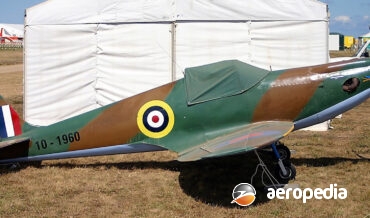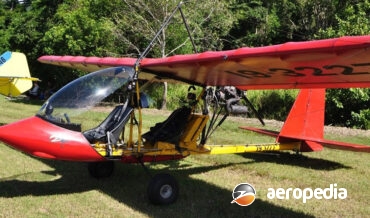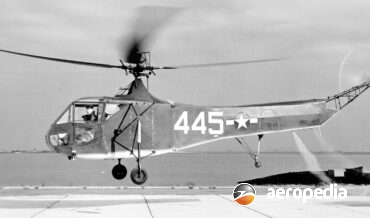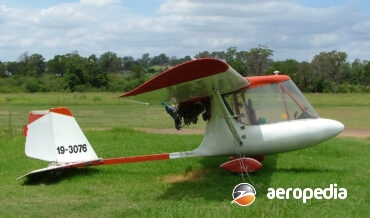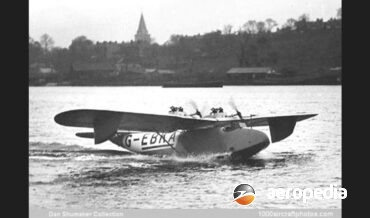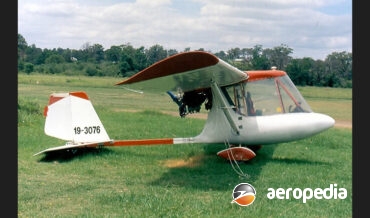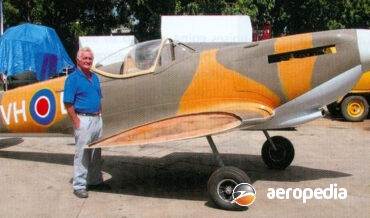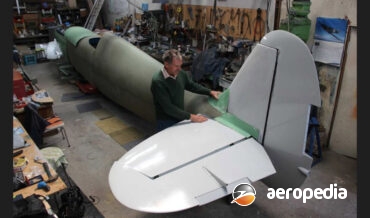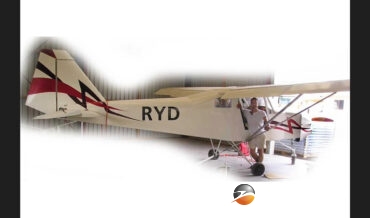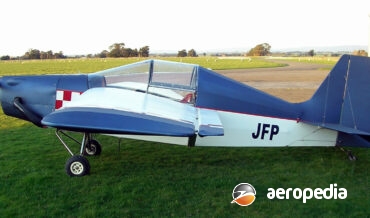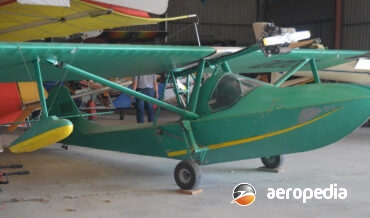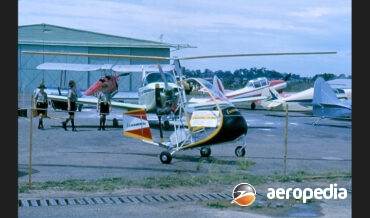David C. Eyre
Mr W Lance Sporer lived on a farm at Glencoe near Mt Gambier in the 1930s and developed some interest in engineering, taking a correspondence course. He became involved in the reconstruction at Mt Gambier of a de Havilland DH.60 Moth which crashed near Jerilderie.
David C. Eyre
- May 25, 2020
The Spitfire SW-1 registered with the RAA as 10-1960 (c/n SPT-01) is a scale replica of the Supermarine Spitfire and is a one-off aircraft designed and built in Australia by the owner.
David C. Eyre
- May 25, 2020
This was an ultralight aircraft similar in appearance to a Thruster 500 and became 19-3227 (c/n 891662) and, fitted with a Rotax 582 engine, was registered under RAA regulations in Queensland on 10 September 1999.
David C. Eyre
- May 25, 2020
The Pegasus was an Australian designed ultra-light for the local market. It was powered by a 34-kw (45-hp) Fuji Robin engine.
David C. Eyre
- May 25, 2020
Very little is known of this aircraft. It was a single-engine high-wing strut-braced monoplane with its tail on a boom and the engine mounted on the framework and a tricycle undercarriage.
David C. Eyre
- May 25, 2020
Nestor Slepcev, who migrated to Australia from Yugoslavia, is known for his design and development of the Storch series, which has sold in some numbers around the World.
David C. Eyre
- May 25, 2020
This was a light two-seat training aircraft with side-by-side seating designed and built by Nestor Slepcev at his production facility at Beechwood, NSW.
David C. Eyre
- May 25, 2020
The Husky was a one-off ultra-light aircraft and was a 75 percent basic scale representation of the Piper Cub. It was registered with the RAA as 10-1377 (c/n 9202) from 16 December 1992 to 5 March 2002.
David C. Eyre
- May 25, 2020
The Junior was designed and built by ex-South African Francois van Teijlingen who for many years had an interest in helicopters and gyrocopters, building three Bensen Gyrocopters and owning a Scorpion and a Brantly B-2 for a period.
David C. Eyre
- May 25, 2020
The HNS-1 was first flown in 1942. In March 1947 the US Coast Guard icebreaker USS Northwind visited Wellington, NZ on its return from the Antarctic where it formed part of the 1946-47 expedition code named Operation Highjump of Admiral Byrd.
David C. Eyre
- May 25, 2020
The Shuttle two-seat three axis strut-braced high wing with flaperons ultralight aircraft with an enclosed cabin was produced for some years in the early 1990s and is similar in appearance to the Cadet Boorabee.
David C. Eyre
- May 25, 2020
The Short S.1 Cockle was a small flying-boat designed and built by Short Brothers in 1924, it being designed for and ordered by Lebbeus Hordern of Sydney as a replacement for the Short Shrimp then in service.
David C. Eyre
- May 25, 2020
Darcy Shipman lived in Glenreagh, NSW and built a light aircraft similar in appearance to a de Havilland DH-53, being a low-wing monoplane fitted with a modified Henderson motor-cycle engine.
David C. Eyre
- May 25, 2020
This was an ultra-light aircraft which was allotted the registration 19-1309 (c/n 2) by the RAA and appeared on the register from 17 October 1991 to 3 December 2008.
David C. Eyre
- May 25, 2020
The Drifter is one of a series of ultra-light aircraft produced by Seabird Aviation of Hervey Bay Queensland. A small production batch was built, and a couple survive, including 25-0256 (c/n DR90-0401) and 25-0319 (c/n DR89-0375).
David C. Eyre
- May 25, 2020
The ASW-29 is one of a series of self-launched gliders produced in West Germany and it was produced in a number of variants.
David C. Eyre
- May 25, 2020
An unidentified aircraft was noted at Hoxton Park, NSW in 1966. It was powered by three single-cylinder engines driving a single propeller.
David C. Eyre
- May 25, 2020
As noted above, Stephen Cohen designed a number of aircraft which were built by this company, including the Avenger, one of which was involved in an incident 2 km south-east of Caboolture on 7 February 1988.
David C. Eyre
- May 25, 2020
This was an ultralight aircraft designed and built by Graeme John Tygar and it was known as the Tygar Mk I.
David C. Eyre
- May 25, 2020
This was a single-engine, tricycle undercarriage light aircraft of amateur design and construction completed in mid 2008 by Lyndon Trethewey of Goolwa, SA.
David C. Eyre
- May 25, 2020
The Tiffin Tardo was a light aircraft built by Mr Tony Tiffin and is a one off. It is a three-axis aircraft built in 2003and based in South Australia and which was placed on the market for sale in 2015 with a total of 350 hours.
David C. Eyre
- May 25, 2020
The Terrafly was an ultra-light aircraft designed and built to meet the provisions of ANO 95-10 and was aimed at providing pilots with an aircraft that flew with similar performance to the Santos Dumont Demoiselle.
David C. Eyre
- May 25, 2020
The Shuttle was an ultralight aircraft produced in the late 1980s and early 1990s and had a high wing and an enclosed single-seat cockpit.
David C. Eyre
- May 25, 2020
In storage at the Moorabbin Air Museum is a collection of parts of an aeroplane called the Tait Flyer
David C. Eyre
- May 25, 2020
This was a scratch-built single-seat high-wing monoplane with good STOL performance that was similar in appearance to the Hughes Lightwing series.
David C. Eyre
- May 25, 2020
In February 1913 a building contractor from Hay, NSW, Mr V B Sylvander, commenced construction of a Chanute type biplane glider which was towed into the air by a motor vehicle and a successful flight was made on 18 May 1913.
David C. Eyre
- May 25, 2020
This was a single-seat ultralight aircraft built by Mr R Sweetapple with an enclosed cockpit which was registered with the RAA as 10-483 (c/n 1) on 20 July 1988.
David C. Eyre
- May 25, 2020
The Spitfire Mk IV Replica is an 80 percent replica of the World War II Supermarine Spitfire, designed and initially produced by Brian Foxley-Conolly in Queensland, who had previously designed and commenced production of the Foxcon Terrier series of light aircraft.
David C. Eyre
- May 25, 2020
In March 2018 it was announced Mr Rodney McNeill, a Vietnam veteran, was building a full-scale replica of a Spitfire Mk I.
David C. Eyre
- May 25, 2020
This aircraft was designed as a one-off by Rino Stoof of Cambridge, NZ in the late 1990s and was almost completed and is known to have got to the stage of engine runs.
David C. Eyre
- May 25, 2020
The Stiletto was a high-performance single-seat ultralight with a pusher engine and of canard configuration. Little is known about its development and production.
David C. Eyre
- May 25, 2020
Rodney Stiff, the founder of the very successful Jabiru company at Bundaberg in Queensland which produces the Jabiru Aircraft for the world’s recreational aviation market, has a background in mechanical engineering and was involved in the design and construction of equipment for cane harvesting for many years.
David C. Eyre
- May 25, 2020
The Stuker is a one-off design by Mr Stewart Kerr in New Zealand and is similar in appearance to a Rans S-9. It was built by Mr Kerr and registered ZK-JFP (c/n 001) to him on 13 May 1997.
David C. Eyre
- May 25, 2020
The MK 2 was an amphibious ultralight designed in Australia by John P Stevens for the local market and is one of a series of aircraft Mr Stephens has produced over the years, all for the ultralight market and most to be operated as amphibians.
David C. Eyre
- May 25, 2020
Little is known about this ultralight aircraft but one example is known to have been involved in an incident 14 km south-west of Jondaryan, Qld on 16 October 1985.
David C. Eyre
- May 25, 2020
This was a small single-seat gyrocopter imported to Australia in the 1960s from South Africa, an example of which was noted at a fly-in at Camden in the 1960s.
David C. Eyre
- May 25, 2020
Two of these gyrocopters are known to have built and registered to the owner Andrew Carruthers at Wetherill Park, NSW, becoming VH-YPX (c/n Y4P 100008) and VH-YPZ (c/n Y4P 100009) on 4 August 2015.
David C. Eyre
- May 25, 2020
The Wright Mite was designed and built by Mr Dudley Wright and his brother in Queensland between 1931 and 1936. It made its first flight in 1937 and was occasionally flown in the Archerfield area.
David C. Eyre
- May 25, 2020
This was a one-off light aircraft built and flown by Barry Wrenford of Bombala, NSW, the aircraft becoming VH-YUT (c/n 1) on 29 July 2011.
David C. Eyre
- May 25, 2020
In 1910 Herbert Woodward of Waterloo, NSW, with his son Percival, built an aircraft similar in appearance to a Bleriot but with features similar to those found on the French aircraft types such as the Antoinette and the Pellier.
David C. Eyre
- May 25, 2020
Recent Comments
Archives
Categories
- No categories
Categories
- No categories
Latest Posts
Newsletter


